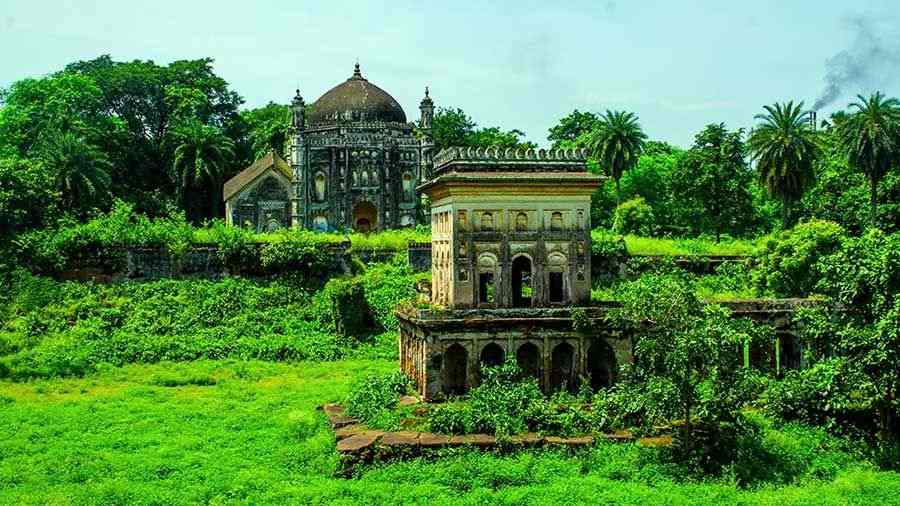In just about two hours by road from Kolkata, is the city of Burdwan. There’s archeological evidence to suggest that the city can trace its origins farther beyond the 6th century B.C. It has had many names — the Sanskrit Vardhamana, Bengali Bardhaman, Badh-e-dawan under the Mughals, and Burdwan during British rule. The last two regimes have left a veritable impact on the region and some of its most important architectural landmarks come from the time.
These are some of the important historical landmarks of this little city by the Ganga.
Curzon Gate

It took a year to construct the lofty Curzon Gate Rangan Datta
Curzon Gate is the gateway to Burdwan from the Grand Trunk (GT) Road. The ceremonial gateway was commissioned by Raja Bijoy Chand Mahatab. Constructed over a period of a year and completed in 1904, it was inaugurated by British Viceroy Lord Curzon giving the arched structure its name. The structure is believed to have been constructed by masons brought over from Italy and because of its resemblance to Mumbai’s Gateway of India, was also known as Star of India. Although it has been rechristened Bijoy Toran, locals still call it Curzon Gate, or Bengali-fied Korjon Gate.
Mazhar of Pir Baharam
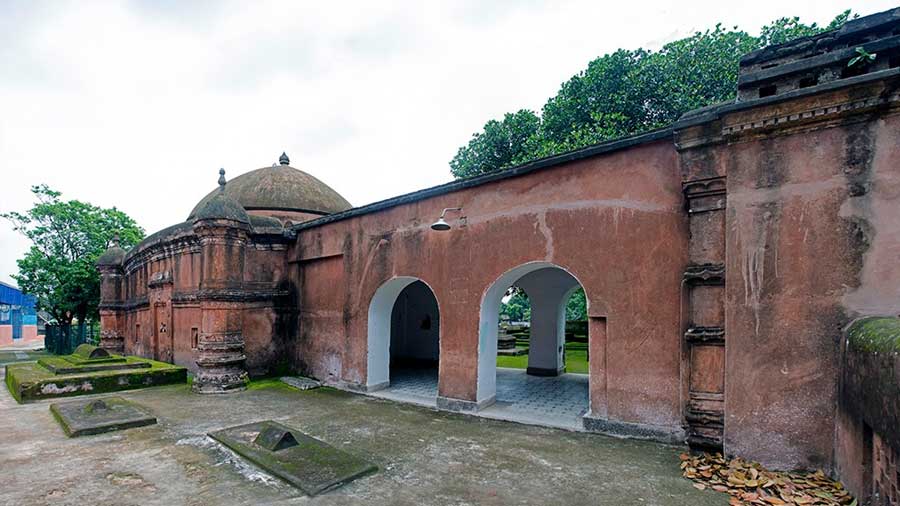
The Mazhar of Pir Baharam dates back centuries Rangan Datta
Baharam is believed to be a poet-saint of Turkish origin who visited India during the rule of Mughal emperor Humayun. He was also known as Baharam sakka (water-carrier) as he served water to thirsty travellers. He died in Burdwan when travelling from Agra to Sri Lanka in the late 1500s or around 970 hijri according to the Islamic calendar and this tomb was built to lay him to rest. The complex is maintained by the Archaeological Survey of India.
Tomb of Sher Afgan Khan
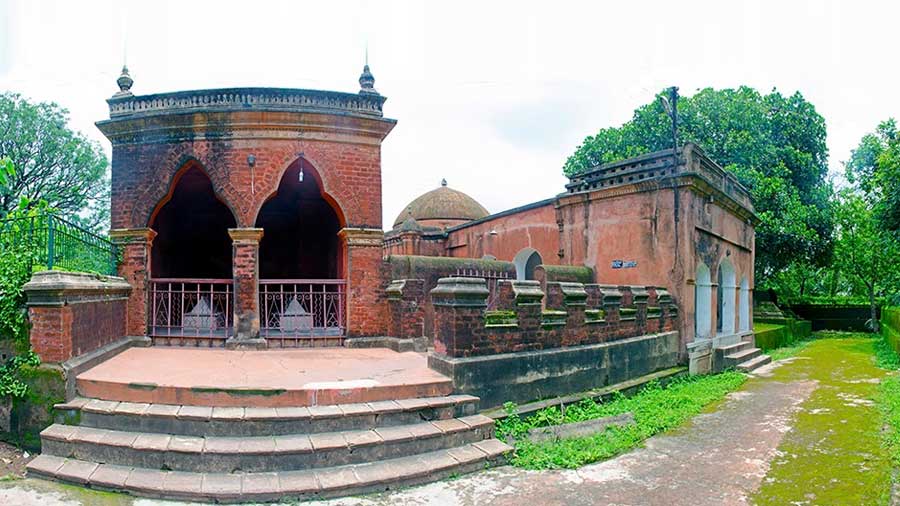
The tombs of Sher Afgan Khan and his nemesis Qutubuddin Koka lie side by side Rangan Datta
Just east of the Pir Baharam’s tomb lie the twin tombs of Sher Afgan Khan and Qutubuddin Koka. Khan was a Jagirdar of Burdwan under Mughal emperors Akbar and Jehangir. He was also the first husband of the famous Mughal queen Nur Jahan, formerly Meh-un-Nissa. The tale goes that Jehangir was infatuated with 17-year-old newly married Merh-un-nissa and around the same time Khan revolted against the Mughal rule and courtier Qutubuddin Koka was sent to deal with him. The men died in a fatal battle and were laid to rest next to each other.
Sarbamangala Mandir

The idol of Ma Sarbamangala is almost 1,000 years old Rangan Datta
Built in 1702 by Maharaja Kirti Chand, the main nine-pinnacled temple in this complex houses an idol of Ma Sarbamangala almost 1,000 years old. It is said to be the first Nabaratna temple of undivided Bengal. There are also five Shiva temples along with several other structures within the complex.
Nawab Bari
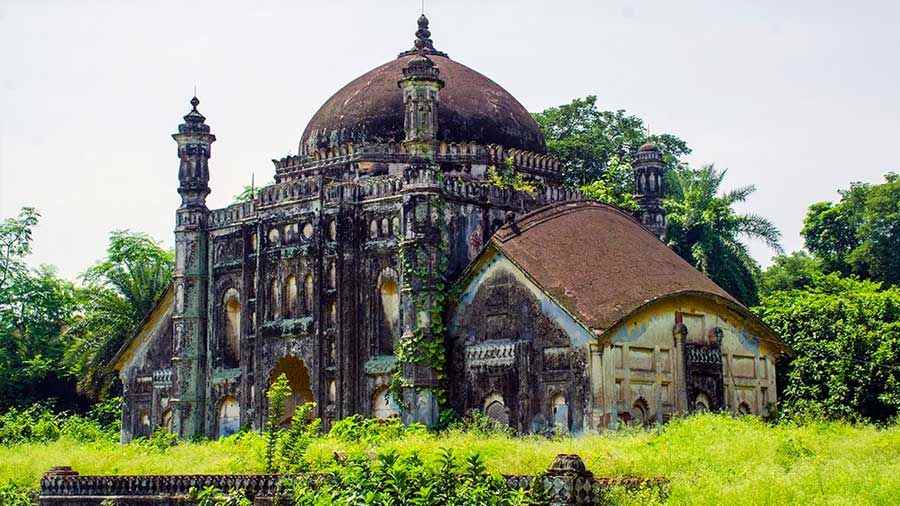
Burdwan’s Nawab Bari is a fine example of Mughal architecture Rangan Datta
Khwaja Anwar, the chief Amir of the Governor of Bengal Azim-us-Shan, was killed in an ambush in 1698. In 1715, Mughal ruler Farrukhsiyar, had a magnificent tomb built on his burial site and this is known as Nawab Bari. Now somewhat in ruins, the large complex is a fine example of Mughal architecture.A pavilion approached by a causeway stands on the central pond, flanked by the single domed tomb on the south and a still functional mosque on the west. One of the later Mughal rulers, built a magnificent tomb in his honour. The tomb stands on the southern end of a large complex with a central pond. The pond houses a pavilion in the centre, approached by a causeway. On the west is a mosque, which is still functional.
108 Shiva Temple Complex (Nababhat)
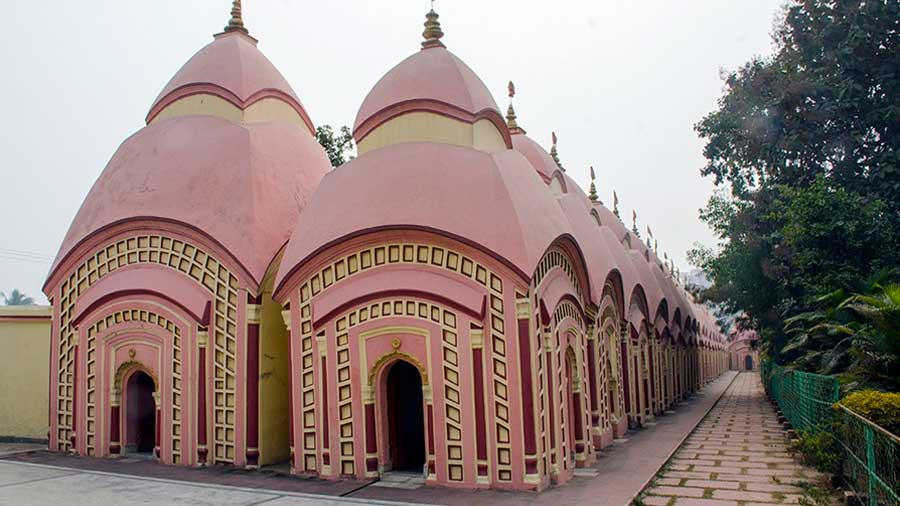
The 108 Shiva temples are arranged in a rectangle Rangan Datta
The aat chala temples, with four-sided sloping roofs, are an iconic part of Bengal’s architectural history and are often found in clusters ranging from two to 108. The 108 Shiva Temple complex at Nababhat, just outside town is well known. The temples are arranged in a rectangle surrounding two ponds, unlike the other well-known 108 temples at nearby Kalna which are arranged in concentric circles. This temple complex was constructed in 1788 by Maharani Bishnu Kumari Devi, wife of Tilak Chandra Bahadur of Bardhaman royal family.
Golap Bagh
Once the private rose garden of the kings of Burdwan, the Golap Bagh or Golapbag hold pride of place within the campus of the University of Burdwan. The university campus was originally the property of the region’s last ruler Uday Chand Mahtab, who left it to the state government after the zamindari system was abolished. Golapbag also houses the Dar-ul-nahar, which was at one time the raja’s rest house.
(Entry is currently closed for visitors due to the pandemic.)
Rangan Datta is a mathematics and management teacher by profession and a travel writer and photographer by passion. He has been addicted to discovering off-beat places since his undergraduate days at St. Xavier's College. Blogging and contributing to Wikipedia are his other passions.
